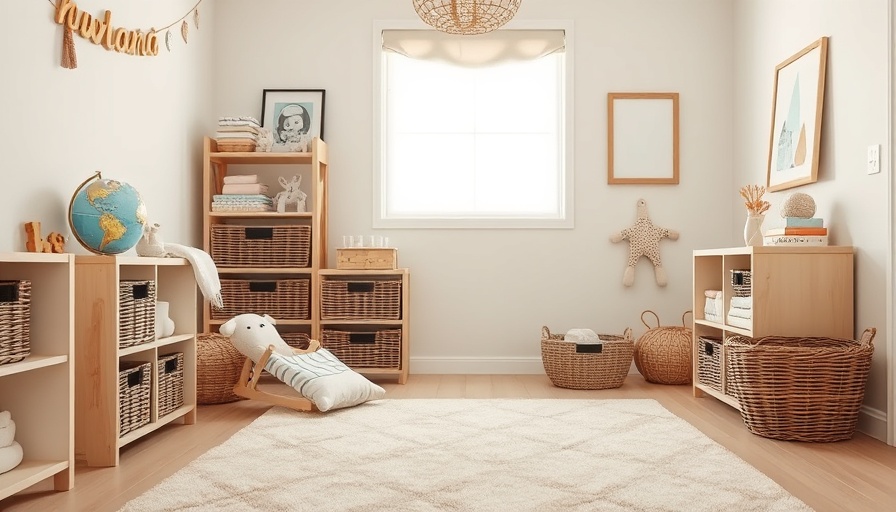
Transforming Chaos: The Power of Decluttering
The whirlwind of toys and playthings in a child’s room can feel overwhelming, and tackling that clutter doesn’t require a bank-breaking budget. The first and most vital step in the organization journey is decluttering. Parents often face the unique challenge of keeping their child’s space tidy, but with a few effective strategies, it becomes an achievable task. Rather than purchasing new storage solutions, it's essential to first take stock of what’s in the room.
Creating a "too small" basket can effectively manage clothing and toys that have outgrown your child. This simple approach not only helps with immediate organizing efforts but also cultivates a habit of ongoing decluttering. Brittany Rodriguez, an expert in organizational strategies, emphasizes the importance of maintaining fewer toys. She notes that by redirecting funds towards experiences rather than more clutter, parents can minimize stress for themselves and their children.
Creative Storage Solutions on a Budget
With decluttering done, the next step is finding budget-friendly storage solutions. Items around the house can be brilliantly repurposed into functional organizers. Think shoe boxes, mason jars, or even old plastic bins—each of these can transform clutter into order. Instead of investing in expensive storage units, consider how everyday objects can be utilized innovatively.
For instance, small baskets can hold art supplies, while clear containers can store toys, making them easily accessible. This not only promotes an organized look but also encourages children to participate in keeping their space tidy. The goal is to create storage that is not only functional but also visually appealing, leading to a harmonious environment.
The Psychological Benefits of an Organized Space
Beyond a clutter-free aesthetic, fostering an organized children's space significantly benefits their mental well-being. Studies reveal that a tidy environment reduces stress and distractions, helping children to focus better on their play and studies. An organized bedroom can provide a sanctuary for children, allowing them to recharge and engage in their activities more fully.
As a parent, creating this environment speaks volumes about your investment in your child's happiness and creativity. As the room becomes less daunting, children can concentrate on imaginative play and learning without the backdrop of chaos.
Tips for Consistent Maintenance
While the initial effort of decluttering and organizing may feel monumental, figuring out a sustainable plan is crucial. Set aside regular intervals to reassess toys and other items to keep clutter from returning. Encouraging kids to help in this maintenance process not only teaches responsibility but also ensures their preferences are respected during clean-up time.
Establish a routine like a 'weekly tidy-up' that promotes accountability. Turning clean-up into a family activity can increase its appeal; songs and games can make this chore a source of fun rather than a burden.
Conclusion: Embracing Your Child's Creative Space
Transforming your child's room from chaos to calm is not just beneficial for the eye—it nurtures a space where creativity can thrive. Through strategic decluttering and budget-friendly solutions, you can create a sanctuary that your child truly enjoys. Consider reaching out to local community groups or online forums for inspiration and support in your organizing journey. A well-organized room is not simply a luxury; it's a valuable investment in your child’s future. Embrace the cleanup and see how this simple act can foster joy and creativity in your family!
 Add Row
Add Row  Add
Add 




Write A Comment